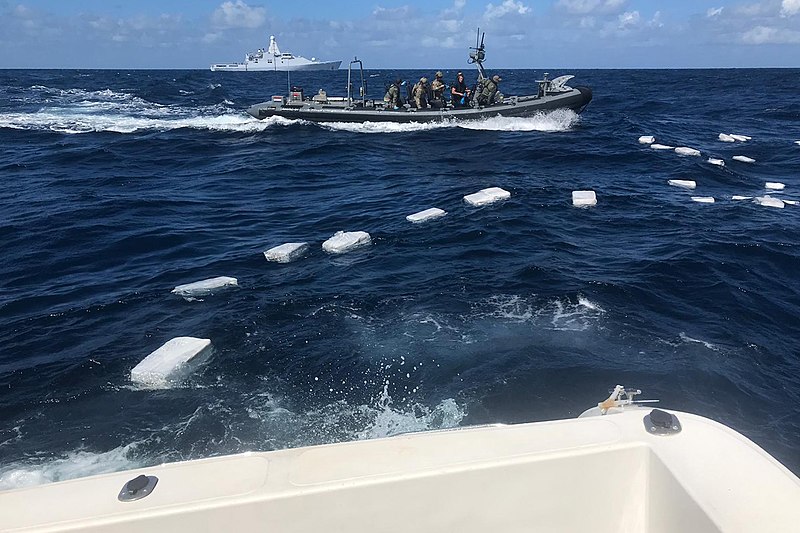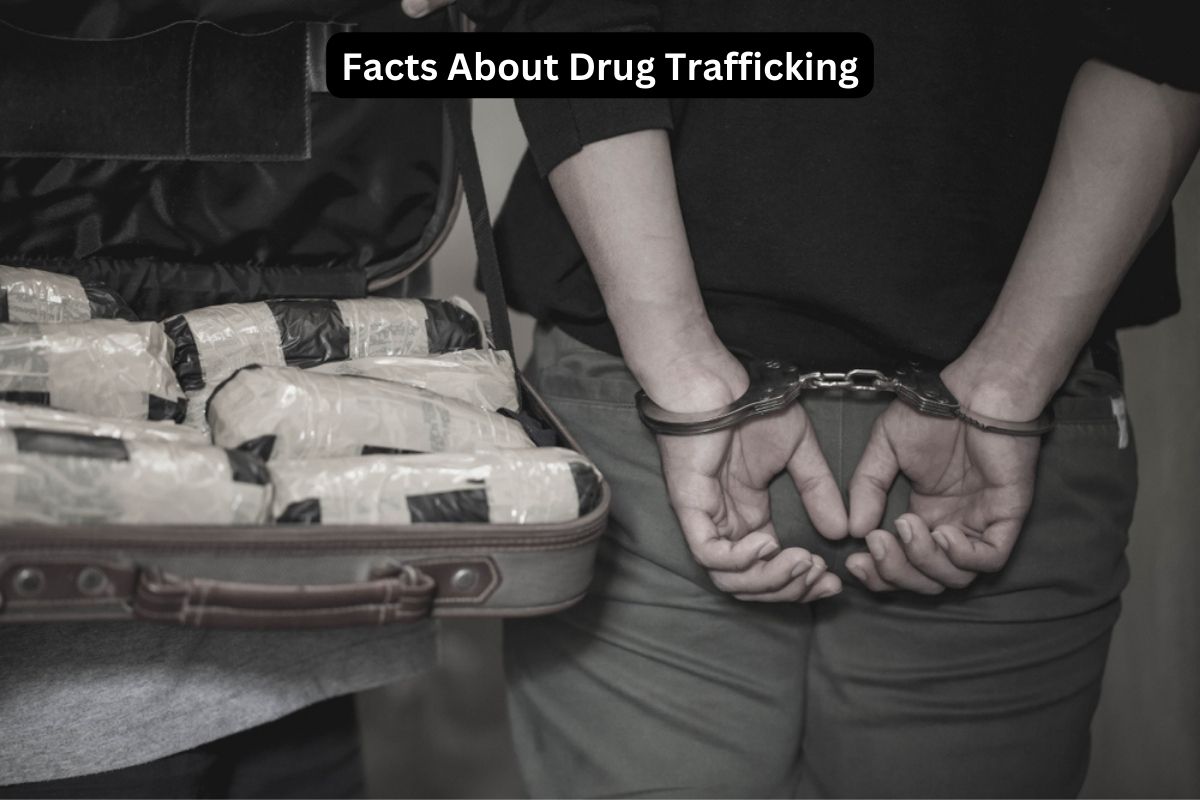Drug trafficking stands as one of the most intricate and far-reaching challenges of our time. In this article, we embark on an exploration of its multifaceted dimensions, from its expansive global presence to its profound societal impacts.
Delving into the inner workings of this illicit trade, we illuminate the complex networks, transportation routes, and criminal hierarchies that characterize it.
Moreover, we scrutinize the corrosive influence of drug trafficking on governance and law enforcement, as well as its intertwined relationship with other forms of organized crime.
Despite concerted efforts by governments and law enforcement agencies, drug trafficking continues to thrive, necessitating innovative and collaborative approaches to address its enduring grip on societies worldwide.
Drug Trafficking Facts
1. Drug trafficking is a global phenomenon
Drug trafficking is not confined to any single region or country; it is a widespread issue that affects nations all over the world. From the remote corners of rural areas to major urban centers, drug trafficking operations can be found.
Also Read: War on Drugs Timeline
Its global nature makes it a complex challenge for law enforcement agencies, as criminal organizations operate across borders, exploiting differences in laws and regulations between countries.

2. It generates immense profits, estimated in the billions annually
The illicit drug trade is incredibly lucrative, with estimates suggesting it’s worth hundreds of billions of dollars annually. This massive profit margin is a significant driving force behind the persistence of drug trafficking despite extensive law enforcement efforts to combat it.
The high profitability of drug trafficking attracts not only established criminal organizations but also individuals seeking quick and substantial financial gains, contributing to its continued prevalence.
3. Involves various substances like cocaine, heroin, and methamphetamine
Drug trafficking encompasses a wide range of illicit substances, each with its own supply chains and distribution networks. These substances include cocaine, heroin, methamphetamine, marijuana, and synthetic drugs like fentanyl.
Also Read: History of Panama Facts
Different regions specialize in the production and trafficking of specific drugs based on factors such as climate, geography, and existing infrastructures.
The diversity of substances involved adds complexity to law enforcement efforts, as strategies must adapt to target multiple types of drugs and their associated trafficking networks.
4. Controlled by powerful criminal organizations such as cartels and gangs
Drug trafficking operations are often controlled by powerful criminal organizations such as cartels, syndicates, and gangs. These groups typically operate with hierarchical structures, with leaders at the top overseeing various aspects of the trafficking enterprise, including production, transportation, and distribution.
Cartels, in particular, are known for their sophisticated operations and use of violence and intimidation to maintain control over territories and protect their interests. The hierarchical nature of these organizations enables them to coordinate large-scale trafficking activities across borders.

5. Utilizes multiple transportation routes including land, sea, and air
Traffickers employ various transportation routes to move illicit drugs from production areas to consumer markets. These routes include land, sea, and air channels, each with its own challenges and risks. Land routes often involve smuggling drugs across borders in vehicles, hidden compartments, or even on foot through remote areas.
Sea routes may involve maritime vessels such as cargo ships or fishing boats, with drugs concealed within shipments or transported via smuggling vessels. Air routes are used for rapid transport, with traffickers employing private planes or commercial flights to move drugs across long distances.
Major trafficking corridors exist in regions like the “Golden Triangle” in Southeast Asia and the “Golden Crescent” in South Asia, where large quantities of drugs are produced and trafficked.
6. Drug profits are often laundered through complex financial networks
Drug trafficking profits are laundered through complex financial networks to conceal their illicit origins and integrate them into the legitimate economy. Money laundering techniques may involve the use of front companies, shell corporations, and offshore accounts to disguise the source and ownership of funds.
Criminal organizations also invest drug profits in legitimate businesses such as real estate, hospitality, and entertainment industries to further obscure the illicit origins of their wealth.
Money laundering enables traffickers to enjoy the proceeds of their criminal activities while evading detection and prosecution by law enforcement authorities.

7. Can lead to corruption within government and law enforcement
Drug trafficking often leads to corruption within government institutions and law enforcement agencies. Corrupt officials may be bribed or coerced by criminal organizations to turn a blind eye to trafficking activities or actively facilitate them.
This corruption undermines the rule of law, erodes public trust in institutions, and hampers efforts to combat drug trafficking effectively. It also allows criminal organizations to operate with relative impunity, as they exploit weaknesses in governance and law enforcement systems for their own benefit.
8. Causes societal issues such as addiction, violence, and instability
Drug trafficking has significant societal consequences, including drug addiction, overdose deaths, and the destabilization of communities. The availability of illicit drugs contributes to substance abuse problems, leading to adverse health outcomes and social disintegration.
Trafficking-related violence, including turf wars between rival criminal groups, poses a direct threat to public safety and undermines community well-being. Moreover, drug trafficking strains healthcare systems and law enforcement resources, diverting valuable resources away from other pressing societal needs.
9. Linked with other crimes like arms and human trafficking
Drug trafficking is interconnected with various other criminal activities, including arms trafficking, human trafficking, and money laundering. Criminal organizations often diversify their operations to maximize profits and minimize risks, engaging in multiple illicit activities simultaneously.
For example, drug trafficking proceeds may be used to finance the purchase of weapons for use in criminal activities or to facilitate the smuggling of migrants across borders.
Additionally, drug traffickers frequently employ money laundering techniques to conceal the proceeds of their illicit activities and integrate them into the legitimate economy.
10. Combated through international law enforcement efforts and treaties
Governments and law enforcement agencies worldwide collaborate to combat drug trafficking through a variety of measures.
These efforts include interdiction operations aimed at disrupting trafficking networks, intelligence-sharing initiatives to gather information on criminal organizations and their activities, and international treaties and agreements designed to coordinate responses to the global drug trade.
Despite these efforts, drug trafficking remains a persistent challenge, requiring ongoing vigilance and cooperation among countries and law enforcement agencies to address effectively.
Additionally, efforts to address drug trafficking must be complemented by initiatives aimed at reducing demand for illicit drugs through prevention, treatment, and harm reduction strategies.
